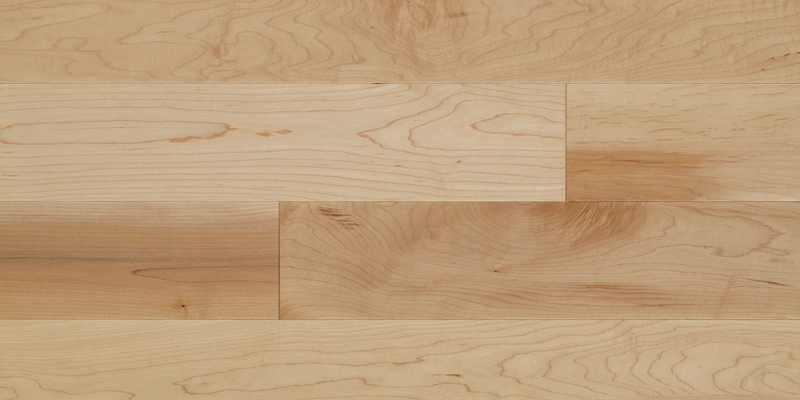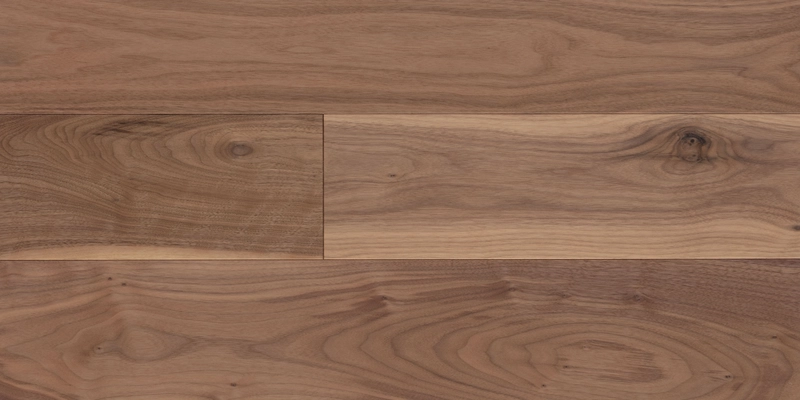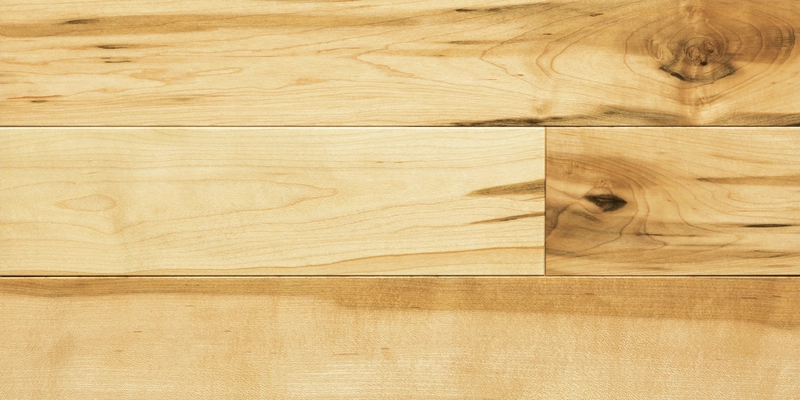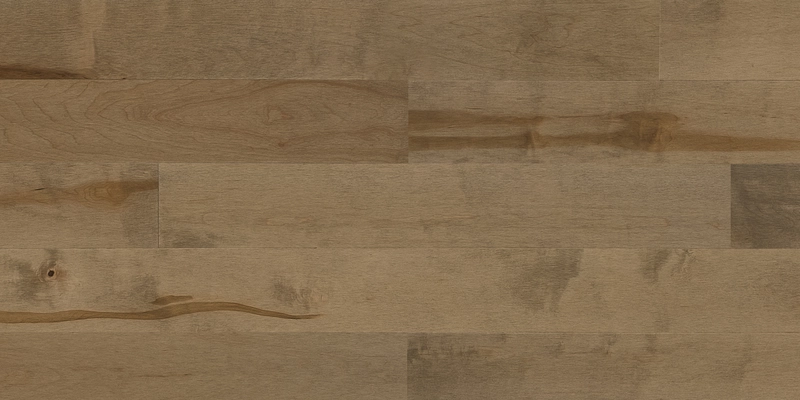
Wood and its features
We can never say this enough: Wood is a natural material that we must adapt to, not the other way around! Since each tree is unique, each board that is extracted from it is also unique. The wood grain, color and character marks vary from one board to another, and it is this diversity and singularity that comprises the richness of this natural material. Many have attempted to imitate this unique material, but none have achieved a perfect match, as each board is a work of art in itself.
Anatomy lesson!
Let’s start with a simple anatomy lesson… wood anatomy, of course! Each tree is comprised of heartwood (yes, even trees have a heart!) that is known as the duramen. This part of the tree surrounds the pith, that is in the center of the tree, with a diameter of only a few centimeters. For certain species, heartwood can be identified by its darker color that contrasts sometimes drastically with sapwood, often very pale in color and located just under the bark. This is the part of the tree that is alive and still growing. Over time, sapwood becomes denser and turns into heartwood (duramen). The cells die slowly and form the “bones of the tree”. New sections of sapwood appear and will continue their cycle to become heartwood. This is how, year after year, the tree will continue to grow and keep traces of each year that goes by, with its wounds, mineral traces, knots where a branch is attached, or scars left by branches that are no longer there.
Because all these sections and their related colors are intrinsic parts of the tree, they will also be a part of your floor!
Hard maple log: At the center of the log is the heartwood or duramen. The sapwood is under the bark and surrounds the duramen.


For example, Hard Maple sapwood will be very pale and chosen for its even and light appearance. Conversely, American Walnut will be chosen for its heartwood with rich levels of warm browns.
Wood grades
Now that we understand the basic anatomy of wood and all the natural richness of each tree, we want to categorize and group its characteristics. In the wood industry in general, and in the floor covering industry, these categorisations lead to a specific terminology used to describe or classify certain visual aspects related to the wood’s anatomy. This is not a quality indicator; it is more of a visual reference. For example, in the Select and Better Grades in Hard Maple, only sapwood colors will be retained, as we seek white wood that is free of scarring from branches, and therefore free of knots and without accumulated minerals in the wood’s fibre. The scarcity of this selection often dictates its pricing, as it is restrictive and excludes a large part of the material from the tree.
There are no definite regulations concerning grade terminology, which makes it difficult to compare the different products that are on the market. It is thus essential to be well-informed about character marks and expected colors according to the selected grade, to ensure that the product meets your expectations. For example, if you like rich colors and knots that add authenticity and warmth to your home, you probably wouldn’t be satisfied with a Select and Better Grade. Not to mention the higher cost, as these boards are chosen according to strict visual criteria. On the other hand, a more “rustic” grade will be comprised of more distinct color variations between the boards, of knots that are sometimes filled with wood paste, and of small cracks that are naturally part of the wood fibre.
For more information on Mercier Wood Flooring grades, refer to the Looks/Grades page
What about floor samples?
When we refer to samples, we mean the sample boards that are in the showroom and boards that are approximately 10 inches long. How can these tools represent all the visual details and variations on such a small surface? You will quickly understand that a sample cannot represent all these variations. We must remember that wood is a living, unique material and that it is not made in a factory. The floor sample will show the color and wood grain and is an “excerpt” of a type of floor, and not its general representation. You are likely to find boards that are almost identical to the sample board in a vast surface of flooring. However, the sample will not show the proportions of different colors, all the possible color variations and cannot show all the character marks that may be present. Before making your choice, get information from your retailer or the manufacturer so that you know what to expect. Keep in mind that, just like marble and slate, there are multiple variations in nature!


Left: Hard Maple natural in Rustic grade which represents a wide range of the species' character marks.
Right: Stained Hard Maple showing that the wood absorbs the stain in different ways, resulting in different colored boards.
From anatomy to mechanical properties!
Because wood is a science in itself, we can talk about the anatomy of wood, but also of its mechanical properties! Each species has its distinctive mechanical properties according to the composition of the wood fibre, the size of its pores, the speed at which it grows and in which climate and area. Some features are specific to the species and will react as expected.
The Janka test is, among other things, a comparison tool to establish the resistance of different species to indentation marks. The more a species is dense, the higher its Janka score. For those of you who are curious, the Janka test measures the force (in pounds) required to sink a 11.284 mm (0.444”.) steel marble halfway into the wood.
Image: Janka test.
Source: https://commons.wikimedia.org/w/index.php?curid=24700863
Let’s take American Walnut, for example, this stunning species has rich dark brown heartwood and nearly white sapwood. American Walnut is not as hard as Hard Maple or Oak. If objects are dropped at equal force on an American Walnut floor versus a Hard Maple floor, the mark left by this incident will be deeper on the Walnut floor. For some people, such wear marks on the floor are not a problem and will even contribute to its charm. For others, this is inconceivable. What is important is to clearly determine your expectations and requirements before you make a choice.
Some species such as Hickory have distinctive character marks, large knots, cracks, and extreme colors that go from white boards to almost black ones. This magnificent living species is of course for informed customers!
If you have a house full of children and pets, this is for you: Certain species of wood, types of surfaces or glosses are much more forgiving to the effects of time and the look of dust and dirt. Species with a very defined grain such as Red Oak, White Oak or White Ash are real allies in hiding marks and other daily incidents. Moreover, the choice of a wood grade known as “Authentic” or “Character”, presenting knots, pronounced color variations between the boards, streaks, cracks and other prominent character marks will hide dirt and scratches better than a “Select” grade, for example. Finally, a wood floor with a brushed surface or a matte finish will better conceal normal wear and the effects of time.
It is crucial to choose according to one’s lifestyle and to keep in mind that no wood floor is indestructible. The resistance of wood cannot compare to that of a concrete or ceramic floors. The patina of time will do its work at some point. This is part of the charm and authenticity of natural material.




